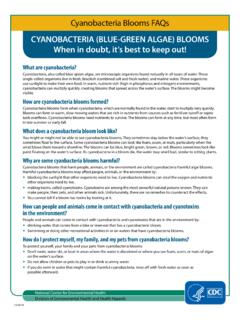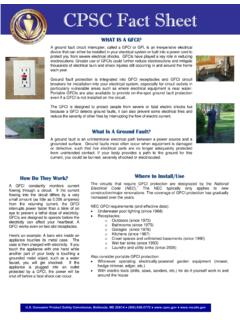Transcription of DIABETES: WHY DO I SOMETIMES FEEL SHAKY, DIZZY AND …
1 KWHY IS THIS LEAFLET FOR YOU?You have been prescribed a treatment which may cause hypoglycaemia. This leaflet will give you essential information on: What is a hypo ? Symptoms Who gets a hypo? How do I treat my hypo? How do I avoid a hypo? Driving and hypos What else do I need to know?DIABETES: WHY DO I SOMETIMES FEEL SHAKY, DIZZY AND SWEATY?HYPOGLYCAEMIA EXPLAINEDLIFESTYLEThe leaflet was developed by TREND UK in collaboration with MSD. This leaflet was initiated, funded and distributed by Date of preparation: May 2018 kWHAT IS A HYPO ?Glucose is a sugar carried in the bloodstream that your body uses for energy. If you have diabetes and take certain treatment, your blood glucose levels can SOMETIMES become too low.
2 This is called hypoglycaemia (or a hypo ) and occurs when your blood glucose level drops below 4 mmol/L. kSYMPTOMSE arly signs and symptoms of a hypo include:Tingling of the lipsHungerPalpitationsTrembling and heavilyFeeling anxiousSymptoms may vary from person to person, but you will feel different very quickly. If you miss these early signs, the symptoms may get worse and include: Slurring your words. Behaving oddly Being unusually aggressive or tearful. Having difficulty in you do not treat your hypo at this stage, you may become kWHAT CAUSES HYPOS?A number of situations can cause a hypo:Drinking toomuch alcoholor drinkingalcohol withoutfoodToo much insulin or too many diabetes or missed mealsEating less starchy foods than usualUnplanned orstrenuous activityIncorrect insulin injection techniqueSometimes there is no obvious cause, but treatment should always be carried out immediately, as advised.
3 KWHO GETS A HYPO? If you are injecting insulin or taking diabetes tablets that make your body produce more insulin, then you may be at risk of hypos. If you are not sure how your diabetes tablets work, discuss this with your local kHOW TO TREAT HYPOSIf you recognise that you are having a hypo, you should treat it immediately with something that will raise your blood glucose quickly. Suitable quick-acting glucose treatments to provide 15g to 20g carbohydrate are: (200ml (a small carton) of smooth orange juice (60 ml glucojuice (5 glucotabs (6 dextrose tablets (4 standard jelly babiesIf you do not feel better after 10 to 15 minutes (or your blood glucose level is still less than 4 mmol/L) repeat ONE of these you start to feel better, and if you are not due to eat a meal, eat some starchy food, like 2 plain biscuits or a small you are not able to treat your hypo yourself, but you are still conscious and able to swallow, someone can give you glucose gel if you have this available.)))))
4 KHOW TO AVOID HYPOS (Eat regularly and include a small portion of starchy carbohydrate at each meal, such as bread, rice or potatoes. (You may need to eat more carbohydrate before and after physical activity. (Keep to sensible alcohol limits and do not drink on an empty stomach. (Take your medication at the recommended dose and times. (If you are testing your blood glucose levels, and notice your readings are regularly dropping, discuss this with your diabetes team as you may need a change in medication or your insulin regimen adjusted. (Always carry glucose with you to treat hypos quickly. If you become unconscious, you will need immediate emergency treatment. Someone should dial 999 for an ambulance. You should be put on your side with your head tilted back.))))))
5 Glucose treatments should NOT be put in your kDRIVING AND HYPOS Keep glucose treatments in the car within easy reach at all times Check your blood glucose before driving and every 2 hours if it is a long journey . Your blood glucose level should be more than 5 mmol/L to you have a hypo while driving, stop the car as soon as possible. Remove the keys to demonstrate you are not in charge of the car, and move into the passenger seat if safe to do so. Treat the hypo as should not drive for at least 45 minutes after recovery because your response rates will be DVLA has guidance in place for reporting episodes of hypoglycaemia. It is important you notify them in line with this guidance. The latest Medical Standards of Fitness to Drive can be found on the DVLA website.
6 For a patient-information leaflet, see the TREND-UK website on the back kREMEMBER: Having a hypo means that your blood glucose level is too low. Act IMMEDIATELY by eating or drinking something that will raise your blood glucose quickly. Never ignore the warning signs. Make sure other people know what to do when you are having a hypo. Always carry glucose and diabetes of frequent hypos: You may not recognise future hypos. Fear and anxiety of getting further hypos. Effects on employment and you are concerned about anything within this leaflet please discuss thiswith your healthcare professional. kUSEFUL RESOURCES:TREND-UK: UK: UK: 0345 123 2399 Driver and Vehicle Licensing Agency: : These links will take you to an external website for which MSD does not review or control the TREND-UK Limited.
7 Content to be reviewed January 2020 Merck Sharp & Dohme Limited Registered Office: Hertford Road, Hoddesdon, Hertfordshire, EN11 9BU. Company Registration Number: 820771 Merck Sharp & Dohme Limited, 2019. All rights reserved.






